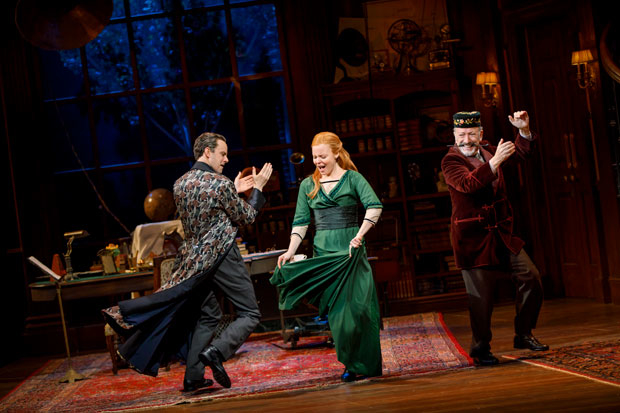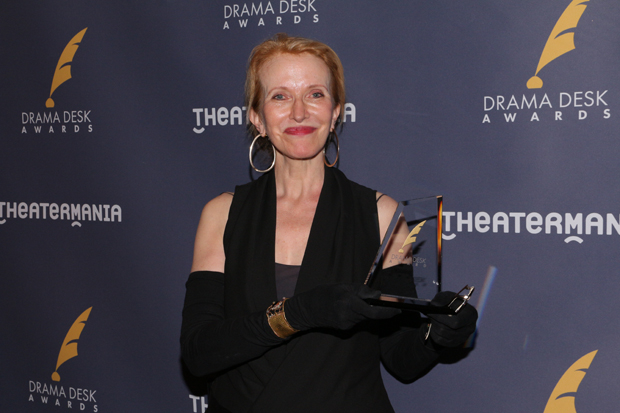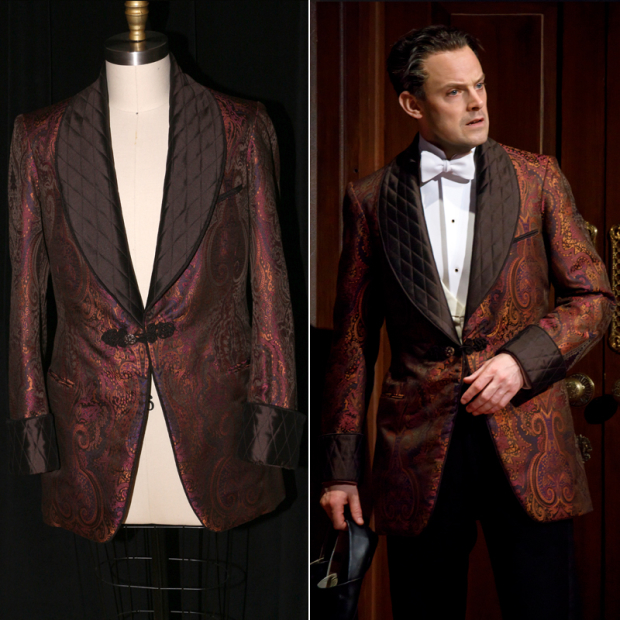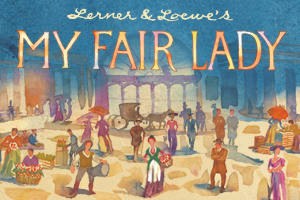Freudian Slips and Fabulous Hats: Catherine Zuber Takes Us Inside My Fair Lady
The six-time Tony-winning, 2018 Tony-nominated costume designer helps stitch together a classic.

(© Joan Marcus)
Catherine Zuber likes a psychological challenge. While she is known for creating showstopping costumes (from Anna Leonowens's violet ball gown in The King and I to Lucia's wild leopard-print dress in Women on the Verge of a Nervous Breakdown), it's the details in each design that offer subtle character clues that embed themselves into our subconscious.
"The first thing I do after reading a script through is make a list of all the characters and meet with the director and have them tell me what they think of every single one of them," says Zuber. "I want to hear what they have to say because the director is the captain of the ship, and I want to make sure we're on the same page."

(© David Gordon)
Zuber's masterful use of textile psychology can be witnessed in Lincoln Center Theater's current production of My Fair Lady, where her creations ground theatergoers in Eliza Doolittle's rags-to-riches story from the very top of the show. In that opening scene, a group of characters spill out of London's Covent Garden after taking in an opera. Their lush and layered attire stand in sharp contrast to those of the vendors and street people who are out peddling their wares. "It's a great moment in the musical where you see all the different walks of life in one place," says Zuber. "You see the elegance of the operagoers, you see the streetwalkers and the costermongers — you have this mélange of people congregating in one place late at night. It's sort of like Times Square after the Broadway shows get out."

(© David Gordon)
It's here we meet the Cockney flower girl Eliza Doolittle. An impoverished but self-proclaimed "good girl," Eliza could head down a very different road, and this is what Zuber aims to convey to the audience by populating the scene with several ensemble actors dressed as prostitutes. It's a way, Zuber says, to signal to the audience that "even in her poverty, she has a certain dignity and tries her best, which helps with the storytelling of why she's intrigued by what Higgins has to offer."
Clothing is one of the key elements of class distinction in My Fair Lady, and through her craft, Zuber consistently reminds the audience that Eliza isn't at home in her teacher Henry Higgins's world of refinement. This is most sharply on display in the iconic Ascot scene, where Eliza makes her first public appearance among the upper class in an attempt to pass her off as "one of them." It was here that Zuber broke from the stark black and white costumes designer Cecil Beaton made famous in the original Broadway production and again in the 1964 film. "It felt expected to do it that way," Zuber admits. "I like to stay away from that because then you can have a more honest reaction that may lead to something else."
By drawing from a palette of mother-of-pearl tones, Zuber was able to incorporate men into the scene in a way that felt continuous onstage. "Having the men in morning clothes would have broken it up a little. This way, it seems to give the stage more volume, since we don't have hundreds of extras." This sea of washed-out tones isn't seen only in the clothing, but extends to the pale colors of the women's wigs and the various silhouette heights and shapes of each woman's hat. "The goal was to create a fossilized fever dream in Eliza's mind of this world that is intimidating to her," reveals Zuber. "Then when Eliza comes into the scene, she has sharper colors that really put your focus on her and they all look like a haze of fossils of a bygone era."

(© David Gordon, Joan Marcus)
Despite the fossilization of certain characters, Zuber's designs themselves still reflect this sartorial period of transition. "The wonderful thing about 1913 is that the clothing is made up of so many bits of fabric. There are so many elements in each dress," she says. In order to create the costumes, Zuber and her team looked to their research and a bit of psychology: "We got into the psyche of the designers of the time — since there really isn't a map — and we began to understand how [the costumes] had to be organic. Bodies were more seen."
The work goes deeper than what's on the surface. The whole presentation of a woman during that period is taken into account, even if the audience doesn't see it onstage. Corsets, or a structure built into a gown that mimics the look of a corset, were still a part of women's fashion in 1913. "What's ironic is a lot of people don't think there were corsets during this time," Zuber reports, "but I see a lot of evidence of corsetry to give the illusion you're not wearing a corset — it was like the Spanx of its day."

(© David Gordon)
Zuber's team took a similar deep dive into a character's psyche when creating costumes for Henry Higgins. As with all of the creations for My Fair Lady, character clues lie in the details: "We felt that we wanted the smoking jacket to be Henry at his most imperious. He wears this after he comes back from the ball. The idea here is that he's at the height of his sense of male entitlement and he feels that he did it all and Eliza was just a player in his bigger universe."

(© David Gordon, Joan Marcus)
It's the work done in the quiet of her own mind and studio that allows Zuber to play freely with her ideas and ruthlessly self-edit in order to get such details exactly right. "I love sketching," she admits. "I love being in my studio and developing the characters. I think I erase more than I draw. My desk is always covered in eraser debris." More than that, though, the entire creative process energizes her: "I love fittings because you can see it coming together. I love the collaboration and seeing it come together further to this common goal of making a production that the audience can enjoy. I love all of it."
My Fair Lady marks Zuber's 19th production with Lincoln Center Theater. See and read more about a few of her other collaborations with LCT in the gallery below.









